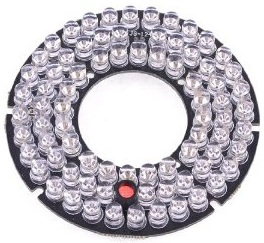
We saw High Definition Serial Digital Interface (HDSDI) hit the market in 2012. With it finally came the possibility of high definition (HD) over coax. The only option in the past had been IP/network cameras via network cable. While IP camera systems are a fantastic direction to go in, they require a whole new knowledge base from traditional analog CCTV systems. This new HDSDI system type was the saving grace for professional and amateur installers alike who didn't want to invest boat loads of time into learning all about the networking it takes to get IP setups up and running. So, why are we suddenly seeing it all on sale from virtually every distributor and retailer we come across?
Simply put, HDSDI is the worst thing to ever happen to the CCTV industry. To quote one of the manufacturers of these HDSDI products, "HDSDI really f*ed everyone over." It's blunt, it's honest, and very hard to argue with. Virtually every user or installer who has experience with HDSDI will tell you all about how finicky the technology is.
Intermittent Video Loss
This is one of the unsolvable mysteries of HDSDI. While video loss is not an uncommon occurrence among security cameras, you're usually able to trace the issue back to a specific problem. With HDSDI, don't be surprised if you can't find anything wrong. Most of the time, the problem is with the technology itself and not related to an installation error. Flickering and complete video loss is very common among HDSDI cameras. In some occasions you're video feed will just freeze. The solution to all of this is the same; reboot the whole system and don't be surprised if you have to reboot it several times in a row.
Power Requirements
We wish we could tell you what your voltage and amperage requirements are but no one honestly knows. The fact is that we found inconsistencies with every model we ever had the misfortune of testing. While one camera within a specific model would require only a half amp, the next one you pulled out of the box would suddenly require a full two amps. At first glance, the solution to the problem seems simple; just make sure you're using two amps with every camera. What this means is individual power supplies for each camera. This might not sound too bad for those of you with only a small handful of cameras, but what about larger systems? How practical do you think it is to run thirty or forty small power supplies? Since twelve volt power distribution boxes only output 1.1 amps at most, these get taken off the table as an option right away.
Trailing
Assuming you've come up with a solution to your power problems, it won't take very long to notice this peach of an issue with your video feed. In a lot of cases, HDSDI camera's do a horrendous job of interpreting motion. Granted, this isn't every camera out there...but it is a lot of them. Regardless of speed, vehicles or people moving across your screen will appear to have a ghost image following them. We refer to this effect as trailing. You don't lose any detail from the object in motion, but the trailing effect is something that will make you cross eyed if you look at it for long enough. You can mess around with your cable, power supply, and camera all you want, but this problem is never going to go away.
Zero Cost Benefit
Before it was all on sale across the board, HDSDI had a pretty identical pricing scale to IP products. With all of the added benefits and features of IP cameras, there was no incentive to purchase HDSDI over IP unless you were just set in your ways to run cameras over coax. With everyone trying to dump their stock, it is noticeably cheaper than IP now but can you really justify this knowing that it's probably going to cause one big headache after the other?
Infrared
Some days it works, and others, it just doesn't. We really don't have an explanation as to why. It's just one of the not so splendid mysteries of HDSDI. Regardless of power supply, camera angle, ambient lighting, artificial lighting, camera style, weather conditions, cloud cover, supernatural forces at work...the Infrared is just always going to be an issue that's eating at the back of your brain that you'll never be able to solve.
Inconsistent is the word we would use to describe HDSDI and that's probably being too nice. If you were fortunate to find a model that works for you, we're very happy for you. For those of you still looking into it, just stop. You don't have to believe anything we said here, but when manufacturers of HSDI products start telling people how terrible it is, that's a pretty strong testament to how atrocious the technology really is.


